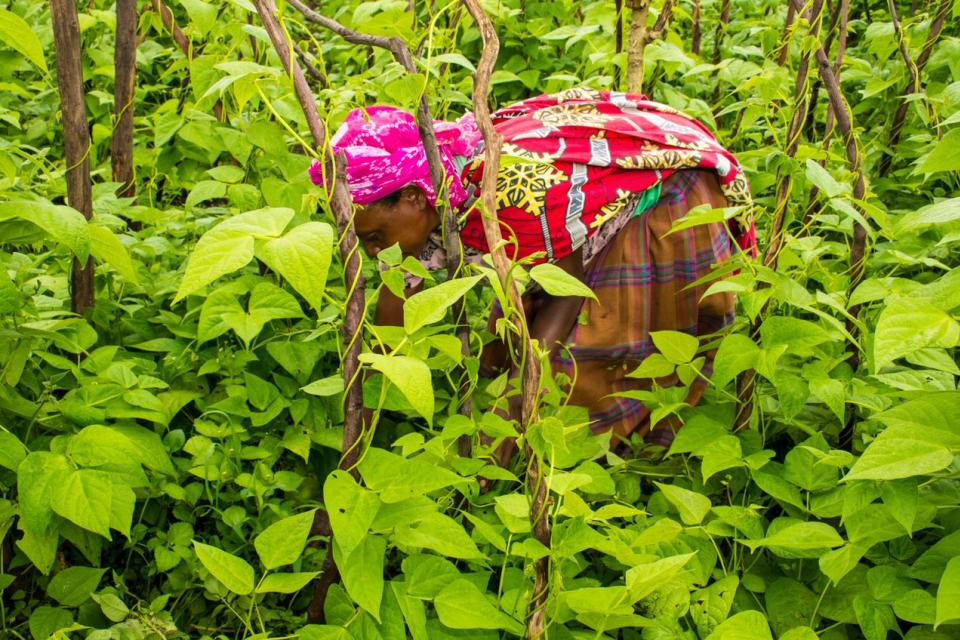Violence against girls and women in agrifood systems amid climate change: evidence event
 Photo: Daniel Donald / UN Women
Photo: Daniel Donald / UN Women
“So many of our women have gone through harassment at the workplace,” says Sunny Munda, a worker at the Mokalbari Tea Estate that sits on the banks of the Brahmaputra River, India. “But the risk of retaliation or recurrence was always there.”
On any given day, up to one in ten of Sunny’s tea-garden colleagues are away from work because of violence against women. For the tea gardens of India, this gender-based violence (GBV) cuts their annual revenues by up to seven percent—which expands out to €47,000 if 89 percent of the women face GBV even once a year.
The recent study, undertaken by the Women’s Safety Accelerator Fund (IDH India), makes a strong business case to invest in preventing GBV among the women workers of the tea gardens.
GBV is a ‘wicked problem’; however, there is hope despite its complexity. “Today, we see that our issues are instantly taken up by the management and also reach the concerned authorities who can help us, as we now know who is responsible for what,” Sunny says.
This online event, hosted by the Evidence Module of the CGIAR GENDER Impact Platform, was a side event of the 12th Asia-Pacific Forum on Sustainable Development 2025. It examined the critical challenges faced by women and girls in agrifood systems (AFS), who are more vulnerable to GBV especially in the face of climate change. The event focused on advancing sustainable, inclusive science and evidence-based solutions for the UN 2030 Agenda, and this year’s emphasis on SDGs 3 (good health and wellbeing), 5 (gender equality), 17 (partnerships for goals) and others.
Experts from diverse backgrounds spoke about the sociocultural and environmental triggers of GBV in AFS, and the economic cost of letting it continue unchecked as normalized and widespread.
Evidence is lacking about the who, why and how of GBV in AFS
The discussion opened with a reflection on the state of evidence on GBV in AFS: strong but limited systematic and credible evidence support the arguments that GBV exists and is on the rise in AFS. Also lacking is evidence that climate change, especially heat stress and drought, exacerbates women’s vulnerability to GBV.
We know, from our experiences and anecdotal evidence, that physical, sexual, psychological and economic GBV is ubiquitous throughout AFS value chains. Women undertake the most laborious, underpaid, precarious and exploitative jobs in the informal and formal sectors of the AFS.
However, GBV is not limited to individual incidents of violence—it is systemic, and thrives on the asymmetry of power and information. It pervades private or public spaces, keeping women predisposed to violence everywhere. However, we lack evidence about some important questions like who is the most at risk and why, who perpetrates and why, and how best to support prevention and response strategies.
GBV costs survivors, employers, businesses and value chains
Besides the obvious and undeniable impact of GBV on the health and socioeconomic status of the survivors, evidence shows that GBV also affects business revenues and increases costs for the employers in the value chains.
The study mentioned at the start shows that GBV causes ten percent absenteeism among the workers, resulting in five to seven percent annual revenue losses. The study successfully makes a business case for investment in preventing GBV among the women workers of the tea gardens.
The effects of GBV are pervasive and intergenerational
GBV affects everyone: not only its direct survivors but also their families, children and wider communities—everyone who is directly dependent on the survivors for care or support bears the brunt of violence.
The economic precarity and social vulnerability of women and their lack of bargaining power contributes to normalization of GBV. This precarity, along with the notion that GBV is a normal part of the socioeconomic structure, passes on to the next generations.
Interventions can create backlash: we need to engage men
Efforts like improving women’s access to productive resources, improving land rights and increasing ownership of economic assets are generally understood to increase economic empowerment, increase women’s agency and reduce their vulnerability to violence.
However, without addressing the contextual evolution of gender relations, economic empowerment of women becomes a double-edged sword, inviting backlash from men and increasing women’s vulnerability to GBV. It is crucial to address GBV as an enduring roadblock in any of the myriad approaches that aim to empower or equip women economically and socially, and to engage men and boys.
There are ways forward to combat GBV
In the current polycrisis—of climate change, resource shortages, environmental challenges, conflicts and pandemics—it becomes more difficult to prevent GBV in AFS and mitigate its effects.
However, it can be done, especially if we are led by survivors and their communities:
- Everyone needs to take part in preventing and mitigating. Strategies for GBV prevention and mitigation require effective partnerships among everyone that is a part of AFS, such as civil society organizations, research organizations, private sector actors, government institutions and communities.
- Until now, GBV has been seen merely as a ‘cost of doing business.’ If we have evidence about GBV’s effect on AFS, it could help make a business case to invest in preventing GBV. It could also stimulate investment in necessary research and action. It is important to assess what it costs the sector, given the many contexts of AFS and multiple connotations and understandings of GBV.
This blog recaps a virtual side event of the 12th Asia-Pacific Forum on Sustainable Development 2025 hosted on February 25, 2025 by the Evidence Module of the CGIAR GENDER Impact Platform. Its speakers were: Benu Verma, Lora Forsythe, Meghna Raghunathan , Festus Kisa, Manisha Majumdar and Ranjitha Puskur.


